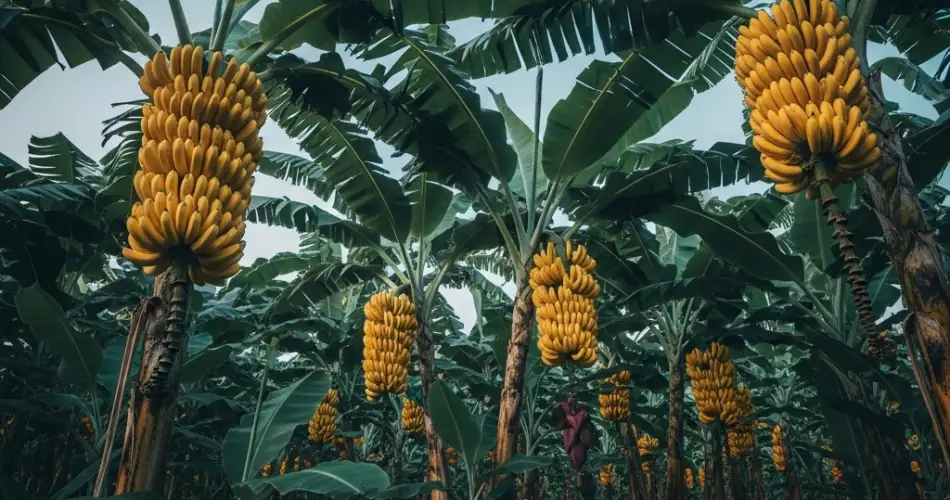Banana trees, with their lush tropical foliage and sweet fruit, can be a rewarding addition to your garden. But to keep them healthy and productive, proper pruning is essential. Unlike many fruit trees, banana plants are technically large herbs, not trees, and their growth habits are quite unique. Understanding how and when to prune them will help ensure optimal fruit production, manage plant size, and maintain a neat appearance.
Why Prune Banana Trees?
Pruning banana trees is vital for several reasons:
-
Improves fruit production: Banana plants put a lot of energy into producing fruit. By removing unnecessary shoots and leaves, the plant can focus its energy where it counts.
-
Prevents overcrowding: Banana plants naturally send out “suckers” or offshoots. Without pruning, a dense cluster forms, competing for nutrients and space.
-
Enhances airflow and reduces pests: Pruning helps air circulate more freely through the plant, reducing the risk of fungal infections and pest infestations.
-
Supports overall health: Removing dead or dying leaves prevents rot and allows sunlight to reach healthy parts of the plant.
Understanding Banana Plant Structure
Before you start cutting, it’s important to understand the structure of a banana plant:
-
Pseudostem: This is the thick, stem-like structure made of tightly packed leaf bases. Each pseudostem produces only one bunch of bananas before dying.
-
Suckers (or pups): These are new shoots that grow from the base of the plant. Some are useful for replacing the main plant, but many are unnecessary.
-
Leaves: Large and tropical in appearance, banana leaves often get torn in the wind or damaged over time.
Each pseudostem lives for about 9 to 12 months. After fruiting, the stem dies, and a sucker takes over.
When to Prune Banana Trees
There are three main times you should prune banana trees:
-
Throughout the growing season: Regularly remove dead or damaged leaves and extra suckers to keep the plant clean and focused on growth.
-
After harvesting fruit: Once the banana bunch is harvested, that particular pseudostem won’t produce again. It should be cut down to make way for new growth.
-
During dormant periods: In cooler climates or off-seasons, prune lightly to tidy up the plant and remove any frost-damaged or diseased parts.
Step-by-Step Pruning Guide
Here’s how to prune your banana plant effectively:
1. Remove Dead or Dying Leaves
Dead leaves are a drain on the plant and a haven for pests. Use sharp garden shears or a knife to cut them off cleanly at the base where they meet the stem. Remove any leaves that are brown, yellow, or torn.
2. Select and Manage Suckers
Banana plants grow lots of pups from the base, but not all should be kept. Choose one or two healthy suckers to replace the main stem after it fruits. These should be:
-
At least 3 feet tall
-
Thick and robust
-
Positioned close to the mother plant
Remove all other suckers by cutting them as close to the ground as possible. This prevents overcrowding and keeps the plant focused on fruit production.
3. Remove the Fruited Stem
After harvesting bananas, cut down the stem that bore fruit. This is a one-time process for each pseudostem. Cut it near the ground, and allow the nutrients in the remaining base to return to the soil or other parts of the plant. You can chop and compost the stem, or leave it to decompose naturally.
4. Trim for Shape and Size
If the plant is growing too tall or sprawling out of bounds, you can trim the tops of leaves or stems to maintain a manageable size. Avoid excessive cutting, though, as too much pruning can stress the plant.
Tips for Healthy Pruning
-
Always use clean, sharp tools to prevent the spread of disease.
-
Prune in dry weather to minimize the risk of fungal infection.
-
Wear gloves when cutting, as the sap can be sticky and irritating to skin.
-
Don’t prune too aggressively; bananas need their leaves for photosynthesis.
Aftercare
After pruning, keep the banana plant well-watered and mulch around the base to conserve moisture and suppress weeds. Organic compost or well-rotted manure can help replenish nutrients, especially after removing a large stem.
Conclusion
Proper pruning is one of the most effective ways to ensure your banana plants remain healthy and productive. By removing dead leaves, managing suckers wisely, and trimming away old stems, you’re guiding the plant’s energy where it matters most—toward growing delicious bananas. Regular maintenance also keeps your garden tidy and your banana grove thriving season after season.



